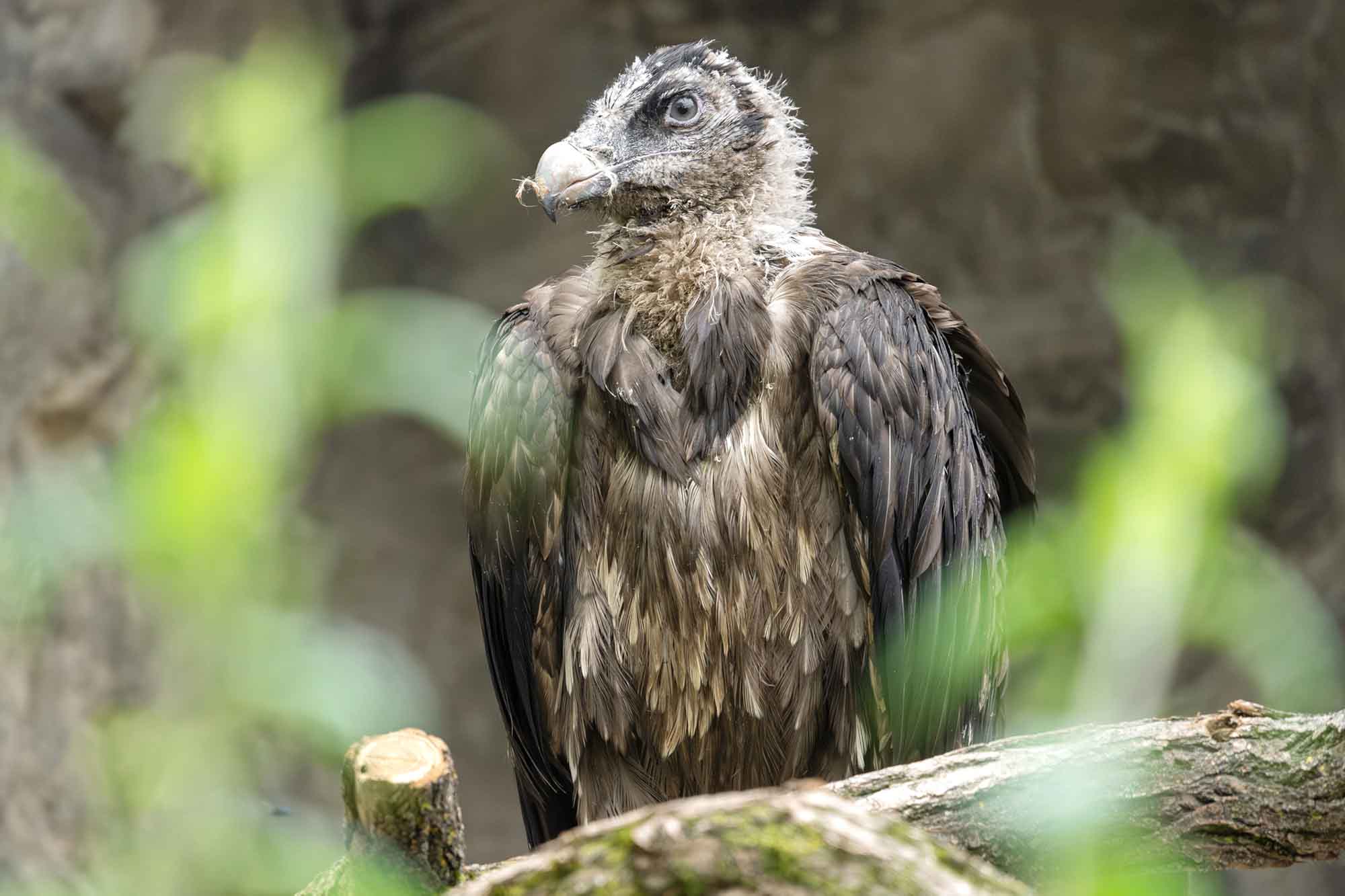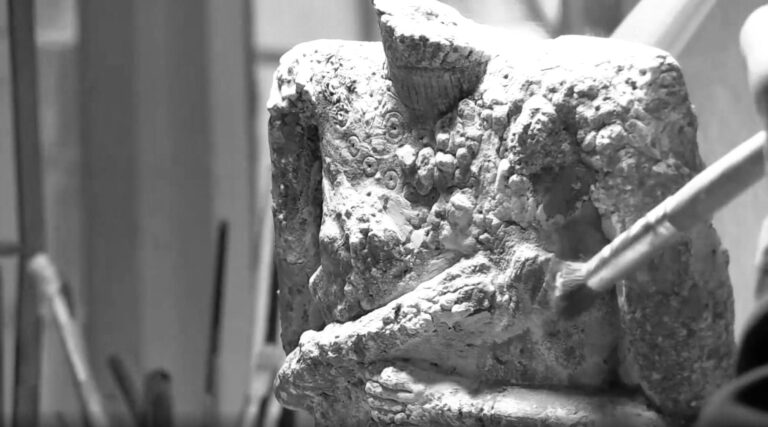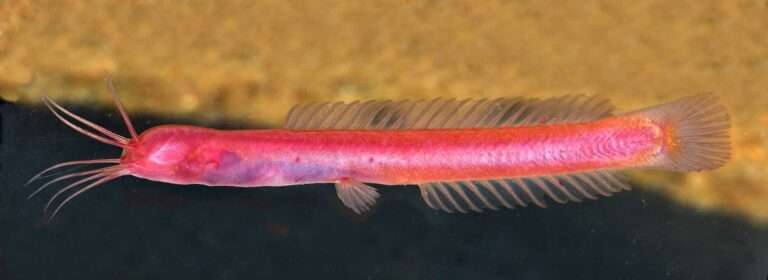A pair of rare fledgling vultures have been set up in a luxury new zoo home with a flock of equally rare bald ibis to teach them to fly as a conservation project picks up pace.
The bearded vultures are young as they still have some of their chick feathers, and would normally still be fed by their parents in the wild. But instead, they will learn from watching the Bald Ibis that shares their aviary.
And keepers at their new home in Schoenbrunn Zoo, Vienna, Austria, have also devised a bizarre network of pneumatic pipes as substitutes to feed them.
The pipes will shoot dead rats and rabbits straight into their new eyrie just like their parents in the wild.
The young pair arrived at the zoo on 15th June from a birds of prey breeding centre dedicated to repopulating the Alps with the close-to-threatened vulture.
Zoo department head Simone Haderthauer said in a statement obtained by Newsflash: “The two animals come from the owl and birds of prey rescue station Haringsee, to which our old couple was also given as part of the breeding program.
“The three-month-old nestlings have not yet fledged and have been placed in a newly established eyrie.
“From there, they will fly to the aviary in the next few weeks and explore their new home.”
Scientific director of the station in Haringsee Hans Frey said: “There has been close cooperation between Schoenbrunn Zoo and our station for almost 50 years.
“We have the same objective, we want to protect species and breed them to conserve stocks in the wild.
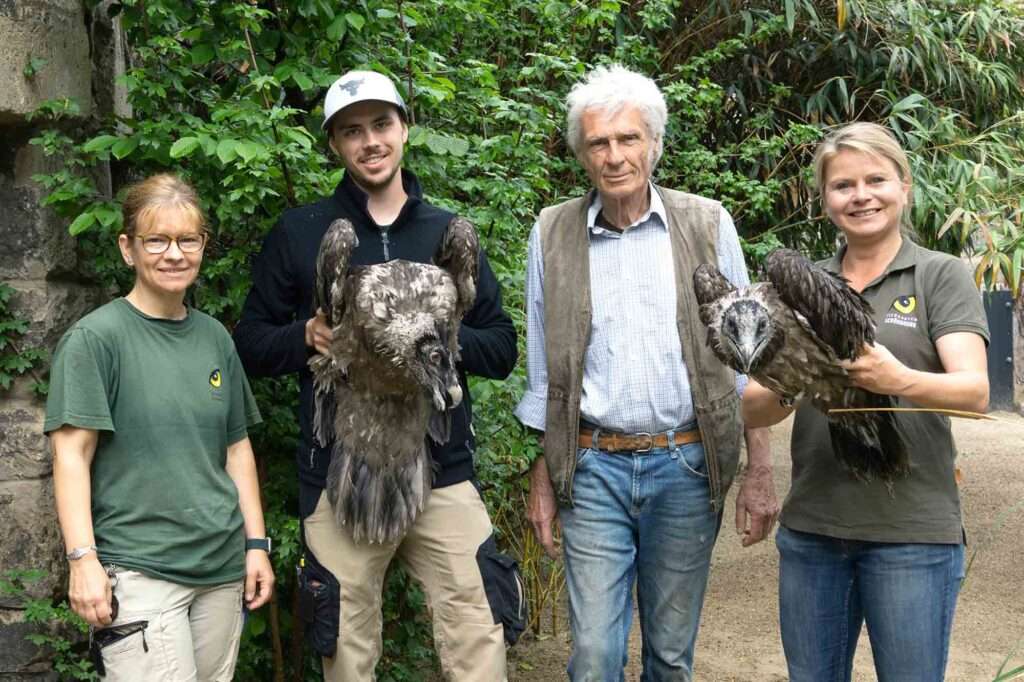
“Another 40 zoos are involved in this international project to reintroduce bearded vultures to the Alps.”
Reports stated that the species was once native to the Alps, but was listed as ‘near threatened’ on IUCN’s List of Threatened Species after attacks by locals.
They believed the birds would attack their goats, sheep and even children.
The last individual bird was reportedly shot in the Aosta Valley, in the Alps, in 1913.
The bald was also extinct in Europe but was reintroduced in part using stock from the zoo with the birds trained to fly south to Italy for winter by scientists using a microlight.
Schoenbrunn Zoo director Hering-Hagenbeck said: “We are very proud to be involved in this project and to take part in conservation breeding.
“In six to seven years, our new pair will be sexually mature.
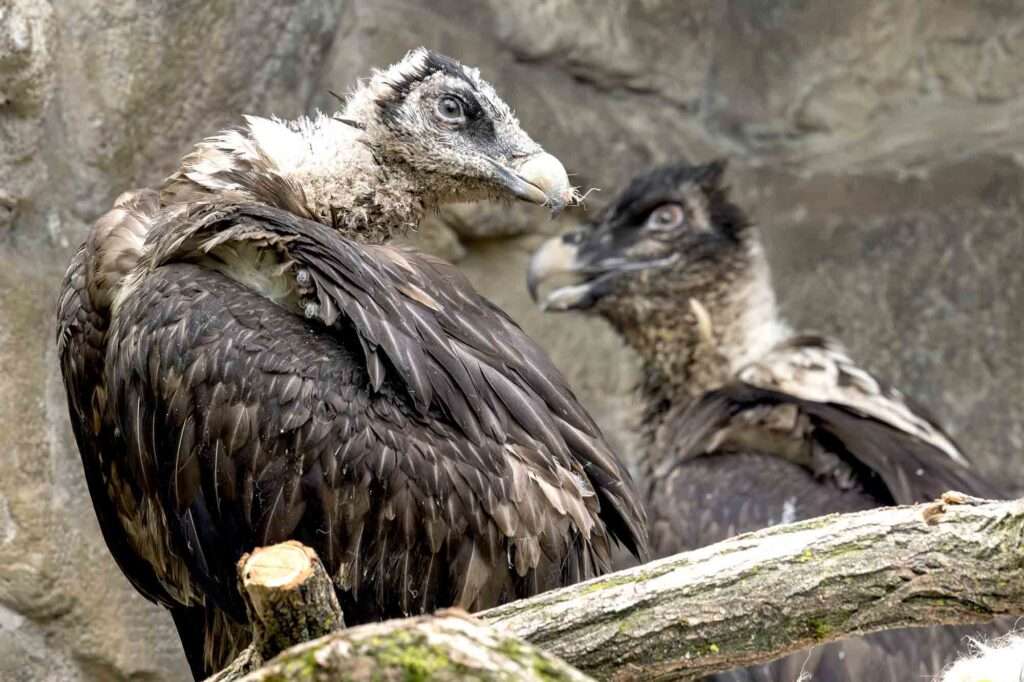
“The aim is for his young animals to be released into nature as part of the project and thus recapture their original habitat in the Alps.
“With the Bearded Vulture moving into the Northern Bald Ibis aviary and the Egyptian Vulture next door, we can now present three of our important reintroduction projects in one place.”
To find out more about the author, editor or agency that supplied this story – please click below.
Story By: Georgina Jadikovska, Sub-Editor: Michael Leidig, Agency: Newsflash
The Ananova page is created by and dedicated to professional, independent freelance journalists. It is a place for us to showcase our work. When our news is sold to our media partners, we will include the link here.

